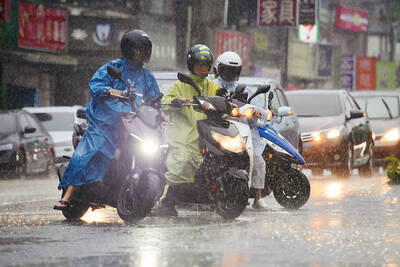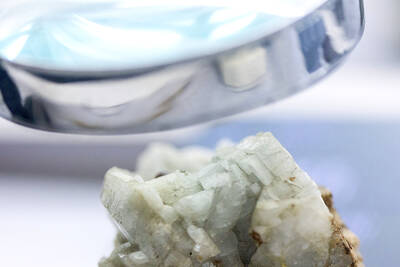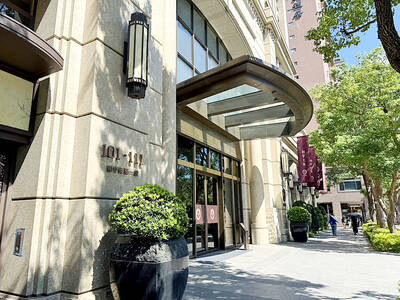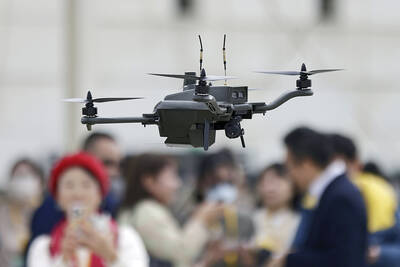Though anthrax has turned American Media Inc's Florida headquarters into a 6,300m2 white elephant and workers are reluctant to return, experts in decontamination say new products can make such buildings safe again.
"I, personally, would go into the building," says general counsel Mike Kahane, whose office was located in the three-story Boca Raton center that housed six of the nation's largest tabloids. "But I know many people don't feel the same way I do."
But experts say they can deal with anthrax-contaminated buildings, noting that no one would dream of abandoning such landmarks as the US Senate office building and NBC headquarters at New York's 30 Rockefeller Plaza just because traces of the deadly bacteria were found there.
"You can't walk away from these buildings all over the United States," says Joan Dougherty, president of AA Trauma Cleanup in Pompano, Florida, an environmental cleanup company.
If the old reliable bleach and water method were the only thing available, it would be nearly impossible to clean up all the anthrax without gutting the affected areas. But people in the decontamination business are pinning their hopes on a new product developed at a government laboratory with congressional backing.
Officials are conducting tests on a bacteria-killing agent developed by Sandia National Laboratories in Albuquerque, New Mexico, which is run by Lockheed Martin Corp for the US Department of Energy. The product, known in the industry as the "SNL formulation," can be used as a liquid, gel, foam, aerosol or fog.
Anthrax spores are 1 to 5 microns in size and act like a hard shell for the bacteria. They are resistant to heat, cold, drought and radiation exposure, and can persist for decades or longer in soil.
The Sandia product is designed to break down the coating and attack the DNA. Ron Gospodarski, president of Bio-Recovery Corp in New York, says anthrax spores tend to clump and settle on surfaces, where this agent can reach them.
"These spores can't burrow themselves into walls and can't burrow themselves into the flooring or the ceiling or anything like that," he says. "So when we come in and fog or we come in and foam or we come in and put topical applications of the SNL formulation, it's going to kill everything that's there."
AMI employees are worried about anthrax in the air ducts and on computer keyboards, like the one used by deceased photo editor Robert Stevens. Gospodarski says the fog particles are smaller than the spores and can go anyplace anthrax can.
"We're pushing that into all the little crevices that even the micron spores of anthrax couldn't fit," he says.
Cleanup at AMI in Florida is a moot point for now; the building is still an active crime scene. Even if the US$4.6 million structure could be fogged, Kahane says a "significant number of employees don't want to go back."
Gospodarski and a team were planning to enter the ABC News offices at Central Park West to do some precautionary cleanup. They were armed with the old standard -- 10 percent bleach solution.
Despite his confidence in the technology, Gospodarski says he can understand why people are afraid.
"That's like saying, `OK, let's rebuild the World Trade Center towers,'" he says. "But does anybody want to have that office on the 102nd floor? I don't think many hands would go up."

The combined effect of the monsoon, the outer rim of Typhoon Fengshen and a low-pressure system is expected to bring significant rainfall this week to various parts of the nation, the Central Weather Administration (CWA) said. The heaviest rain is expected to occur today and tomorrow, with torrential rain expected in Keelung’s north coast, Yilan and the mountainous regions of Taipei and New Taipei City, the CWA said. Rivers could rise rapidly, and residents should stay away from riverbanks and avoid going to the mountains or engaging in water activities, it said. Scattered showers are expected today in central and

COOPERATION: Taiwan is aligning closely with US strategic objectives on various matters, including China’s rare earths restrictions, the Ministry of Foreign Affairs said Taiwan could deal with China’s tightened export controls on rare earth metals by turning to “urban mining,” a researcher said yesterday. Rare earth metals, which are used in semiconductors and other electronic components, could be recovered from industrial or electronic waste to reduce reliance on imports, National Cheng Kung University Department of Resources Engineering professor Lee Cheng-han (李政翰) said. Despite their name, rare earth elements are not actually rare — their abundance in the Earth’s crust is relatively high, but they are dispersed, making extraction and refining energy-intensive and environmentally damaging, he said, adding that many countries have opted to

FORCED LABOR: A US court listed three Taiwanese and nine firms based in Taiwan in its indictment, with eight of the companies registered at the same address Nine companies registered in Taiwan, as well as three Taiwanese, on Tuesday were named by the US Department of the Treasury’s Office of Foreign Assets Control (OFAC) as Specially Designated Nationals (SDNs) as a result of a US federal court indictment. The indictment unsealed at the federal court in Brooklyn, New York, said that Chen Zhi (陳志), a dual Cambodian-British national, is being indicted for fraud conspiracy, money laundering and overseeing Prince Holding Group’s forced-labor scam camps in Cambodia. At its peak, the company allegedly made US$30 million per day, court documents showed. The US government has seized Chen’s noncustodial wallet, which contains

SUPPLY CHAIN: Taiwan’s advantages in the drone industry include rapid production capacity that is independent of Chinese-made parts, the economic ministry said The Executive Yuan yesterday approved plans to invest NT$44.2 billion (US$1.44 billion) into domestic production of uncrewed aerial vehicles over the next six years, bringing Taiwan’s output value to more than NT$40 billion by 2030 and making the nation Asia’s democratic hub for the drone supply chain. The proposed budget has NT$33.8 billion in new allocations and NT$10.43 billion in existing funds, the Ministry of Economic Affairs said. Under the new development program, the public sector would purchase nearly 100,000 drones, of which 50,898 would be for civil and government use, while 48,750 would be for national defense, it said. The Ministry of